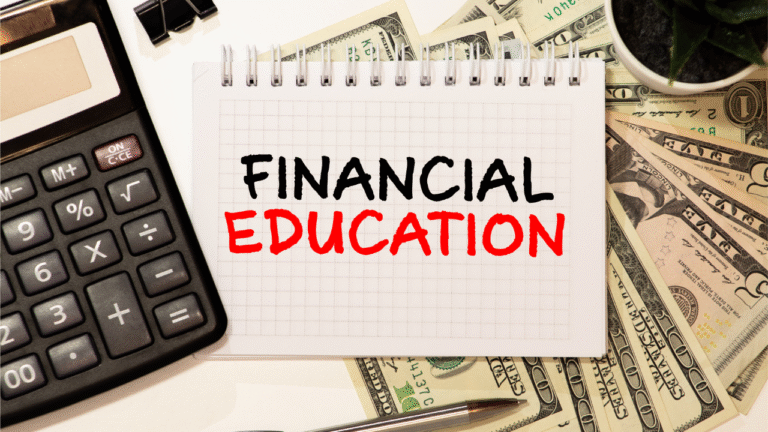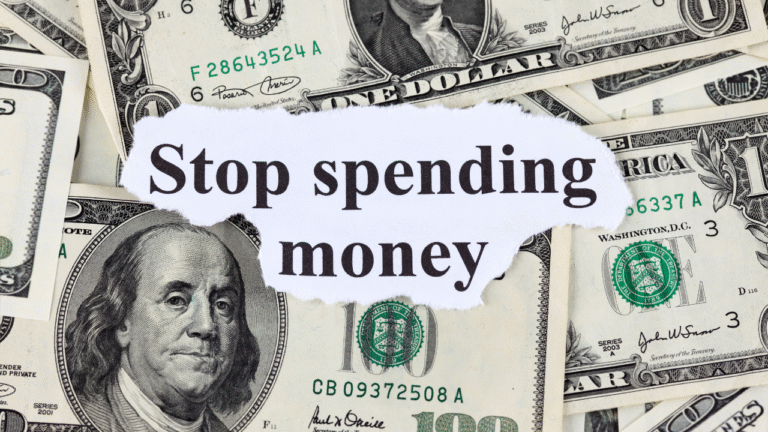Introduction
Your credit report holds the key to your financial future, yet millions of Americans pay unnecessary fees to access what’s legally theirs for free. If you’re wondering how to check credit report for free in 2025, you’re in the right place. The latest updates from the Federal Trade Commission have made it easier than ever to monitor your credit health without spending a dime.
With identity theft affecting over 14 million Americans annually and credit scores impacting everything from your mortgage rate at Wells Fargo to your insurance premiums at State Farm, staying on top of your credit report isn’t just smart—it’s essential for your financial wellbeing.
Table of Contents
Why Checking Your Credit Report for Free Matters More Than Ever in 2025
The financial landscape has shifted dramatically. With inflation impacting household budgets and lending standards tightening, your credit score has become more critical than ever. A single point difference can mean thousands of dollars in interest over a 30-year mortgage.
Recent data from the Consumer Financial Protection Bureau shows that 26% of consumers found errors on their credit reports that could negatively impact their scores. These mistakes could cost you:
- Higher interest rates on car loans at Toyota Financial or Honda Credit
- Increased insurance premiums with companies like Allstate or Progressive
- Rejection for the best cash-back credit cards from Chase or Discover
- Higher security deposits for utilities like ComEd or Pacific Gas & Electric
The Only Legitimate Ways to Check Credit Report for Free
1. AnnualCreditReport.com – Your Government-Guaranteed Right
The Fair Credit Reporting Act entitles every American to one free credit report annually from each of the three major bureaus. AnnualCreditReport.com is the only website authorized by federal law to provide these reports.
Step-by-step process:
- Visit AnnualCreditReport.com (never use .net or .org versions)
- Provide your Social Security number, date of birth, and current address
- Select which bureau reports you want (Equifax, Experian, or TransUnion)
- Answer identity verification questions
- Download your reports immediately
Pro tip: Stagger your requests throughout the year. Check one bureau every four months to monitor changes continuously.
2. Credit Card Companies and Banks Offering Free Scores
Many financial institutions now provide free credit monitoring as a customer benefit:
Major providers include:
- Capital One Credit Wise: Available to anyone, even non-customers
- Chase Credit Journey: Free for Chase cardholders and checking account customers
- Discover FICO Score: Available on statements for Discover cardholders
- Bank of America: Provides FICO scores for eligible account holders
- Citi: Offers free FICO scores through their mobile app
Understanding the different types of bank fees you should avoid can help you choose institutions that provide these free credit monitoring services without hidden charges.
3. Legitimate Free Credit Monitoring Services

Several reputable companies offer free credit monitoring with optional paid upgrades:
Top choices for 2025:
- Credit Karma: Provides VantageScore 3.0 from TransUnion and Equifax
- Credit Sesame: Offers monthly credit score updates and monitoring
- NerdWallet: Includes credit score tracking with financial education tools
- Experian: Provides free FICO score and basic monitoring
How to Maximize Your Free Credit Report Benefits
Understanding What’s Actually On Your Report
Your credit report contains five crucial sections:
Personal Information:
- Current and previous addresses
- Employment history
- Names and aliases used
Account Information:
- Credit cards, mortgages, auto loans, student loans
- Payment history for the past 24 months
- Credit limits and current balances
Public Records:
- Bankruptcies, tax liens, civil judgments
- These can remain for 7-10 years depending on the type
Inquiries:
- Hard inquiries from loan applications (impact your score)
- Soft inquiries from background checks (don’t affect your score)
Collections and Charge-offs:
- Accounts sent to collection agencies
- Accounts written off by creditors
Red Flags to Look for When You Check Credit Report for Free
Immediate action items:
- Accounts you didn’t open (potential identity theft)
- Incorrect payment histories showing late payments you made on time
- Wrong personal information that could indicate mixed files
- Accounts still showing as open that you’ve closed
- Balances that don’t match your records
Similar to how you should regularly track and cancel subscriptions you no longer need, monitoring your credit report helps you catch unauthorized activities early.
2025 Updates: New Rules and Enhanced Protections

The credit reporting industry has implemented several consumer-friendly changes:
Extended Free Report Access
Due to the ongoing economic impacts from recent years, the three credit bureaus continue offering weekly free credit reports through December 2025. This temporary measure, originally implemented during the pandemic, gives consumers unprecedented access to monitor their credit.
Medical Debt Changes
Starting in 2025, paid medical collections are removed from credit reports immediately, and unpaid medical debt under $500 won’t appear on reports at all. This change could boost millions of Americans’ credit scores.
Faster Dispute Resolution
New automated systems must resolve simple disputes within 30 days, down from the previous 45-day window. Complex disputes still require the full investigation period.
Step-by-Step Guide: How to Check Credit Report for Free Right Now
Phase 1: Preparation (5 minutes)
- Gather required information:
- Social Security number
- Current address and previous addresses from the last two years
- Date of birth
- Phone number
- Choose a secure internet connection (avoid public Wi-Fi)
- Set aside 30-45 minutes for the complete process
Phase 2: Accessing Your Reports (15 minutes)
- Navigate directly to AnnualCreditReport.com
- Click “Request your free credit reports”
- Fill out the personal information form accurately
- Select all three credit bureaus for a comprehensive view
- Complete identity verification (may include questions about your credit history)
Phase 3: Review and Analysis (20 minutes)
- Start with personal information: Verify names, addresses, and employment details
- Examine account details: Check each credit account for accuracy
- Review payment history: Look for any incorrect late payment marks
- Check credit inquiries: Identify any unauthorized hard pulls
- Note any collections or public records
What to Do If You Find Errors on Your Free Credit Report
Document Everything
- Screenshot or print pages showing errors
- Gather supporting documentation (bank statements, payment records)
- Note the specific credit bureau reporting the incorrect information
File Disputes Strategically
Online disputes (fastest method):
- Equifax: Submit through their online dispute center
- Experian: Use their online dispute portal
- TransUnion: File disputes via their website
Mail disputes (creates paper trail): Send certified letters to:
- Equifax: P.O. Box 740256, Atlanta, GA 30374
- Experian: P.O. Box 4500, Allen, TX 75013
- TransUnion: P.O. Box 2000, Chester, PA 19016
Follow Up Religiously
- Credit bureaus have 30 days to investigate
- They must provide written results
- If the error isn’t corrected, escalate to the Consumer Financial Protection Bureau
Advanced Strategies: Beyond Basic Credit Report Checking
The 4-4-4 Monitoring System
- Check one bureau every 4 months
- Set 4 calendar reminders throughout the year
- Focus on 4 key areas: accounts, payments, inquiries, and personal info
Credit Utilization Optimization
When you check your credit report for free, pay special attention to your credit utilization ratios. Keep individual card utilization below 10% and overall utilization under 30% for optimal scoring.
Timing Your Applications
Space out credit applications by at least 45 days to minimize the impact of hard inquiries. Use your free credit monitoring to track when inquiries fall off after 24 months.
Just as you research the best cash back apps for daily shopping to maximize rewards, timing your credit decisions strategically can save you thousands in interest costs.
Common Mistakes That Cost You Money
Paying for “Free” Credit Reports
Legitimate free services never require payment information upfront. Avoid sites with:
- Mandatory “free trial” periods
- Requests for credit card information
- URLs that aren’t AnnualCreditReport.com for official reports
Ignoring Soft Inquiry Opportunities
Many services offer soft pulls that don’t affect your credit score:
- Pre-qualification tools from Discover, Capital One, and Chase
- Rate shopping tools from LendingTree or Credible
- Insurance quote comparisons that use soft inquiries
Mixing Up Credit Scores vs. Credit Reports
Your credit report contains the data; your credit score is calculated from that data. Different scoring models (FICO vs. VantageScore) can show different numbers, but both are valid.
2025 Trends Affecting Your Credit Health
Buy Now, Pay Later Impact
Services like Afterpay, Klarna, and Affirm are increasingly reporting to credit bureaus. What seemed like interest-free purchases could now affect your credit utilization and payment history.
Rental Payment Reporting
More property management companies are reporting rent payments to credit bureaus. Services like RentTrack and PayYourRent can help build credit history for responsible renters.
Alternative Data Inclusion
Some lenders now consider utility payments, cell phone bills, and subscription services when evaluating creditworthiness. This trend particularly benefits consumers with thin credit files.
FAQs: About Checking Your Credit Report for Free
Q1. How can I check my credit report for free in 2025?
You can get free reports from Equifax, Experian, and TransUnion at AnnualCreditReport.com.
Q2. How often can I check my credit report for free?
You’re entitled to one free report per bureau each year, but through December 2025, all three bureaus are offering free weekly online reports.
Q3. Does checking my credit report hurt my credit score?
No. Pulling your own credit report is considered a soft inquiry, which does not affect your credit score.
Q4. What should I look for when I check my credit report?
Verify personal information, check account balances, payment history, inquiries, and look out for errors or suspicious accounts that may signal identity theft.
Q5. How do I dispute errors on my free credit report?
File disputes online or by mail with the bureau (Equifax, Experian, or TransUnion). They must investigate within 30 days and send you written results.
Take Control of Your Financial Future Today

Knowing how to check your credit report for free is just the beginning of your journey toward financial wellness. Regular monitoring helps you catch errors early, prevent identity theft, and optimize your credit health for major purchases.
Your credit report is a living document that reflects your financial responsibility. By staying vigilant and using the free tools available in 2025, you can maintain the strong credit profile needed for life’s important milestones—whether you’re buying your first home in Austin, financing a new Honda Accord, or simply qualifying for the best rewards credit cards.
Remember, financial success isn’t about making more money—it’s about making smarter decisions with the money you have. Start saving smarter with SmartSaveUSA.com and take the first step toward building lasting wealth.











